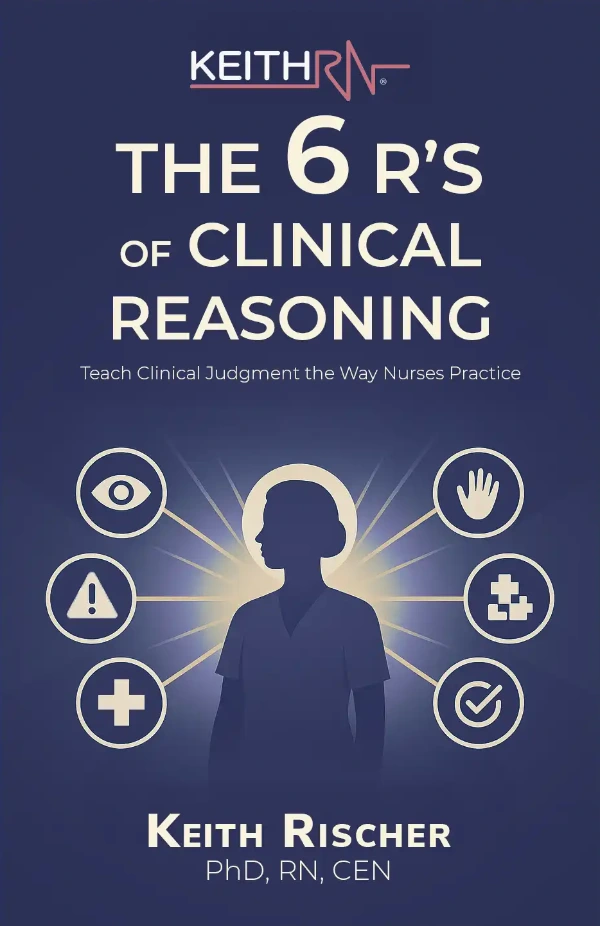
Have you ever stopped to consider what the good Samaritan and a good nurse have in common?
Though this story told by Jesus is typically used to identify those who come to the assistance of another in need, the essence of this parable has relevance and is applicable to what a nurse does in practice every day.
Leading nurse educator and researcher Dr. Patricia Benner has a unique perspective that is relevant for every nurse and especially nurse educators who are responsible for teaching the next generation the values and essence of what it means to be a nurse.
“As nurses, we have been given the ministry and tradition of compassionately caring for strangers, of loving our neighbors as ourselves…we need to be open to see every patient as an opportunity to demonstrate this compassion to those we do not yet know.”
(Benner, 2012, p. XX)
In order to recognize the relevance of what Dr. Benner is communicating we need to go back to the context of this story over 2000 years ago.
A religious leader of the Jews approached Jesus and to justify himself he asked a question, “Who is my neighbor?” Instead of answering the question directly, like a good teacher, Jesus told the following story:
“A Jewish man was traveling from Jerusalem down to Jericho, and he was attacked by bandits. They stripped him of his clothes, beat him up, and left him half dead beside the road.”
“By chance, a priest came along. But when he saw the man lying there, he crossed to the other side of the road and passed him by. A Temple assistant walked over and looked at him lying there, but he also passed by on the other side.”
“Then a despised Samaritan came along, and when he saw the man, he felt compassion for him. Going over to him, the Samaritan soothed his wounds with olive oil and wine and bandaged them. Then he put the man on his own donkey and took him to an inn, where he took care of him. The next day he handed the innkeeper two silver coins, telling him, ‘Take care of this man. If his bill runs higher than this, I’ll pay you the next time I’m here.’
“Now which of these three would you say was a neighbor to the man who was attacked by bandits?” Jesus asked.”
The man replied, “The one who showed him mercy.” Then Jesus said, “Yes, now go and do the same.” (Luke 10:30-37)
Four Takeaways
To make the good Samaritan practical and relevant to your nursing students, these four principles are timeless and need to be communicated to the next generation as Dr. Benner suggests.
1. People have value
Regardless of one’s social or ethnic status, every person has equal worth, and the nurse communicates this worth by withholding judgments or assumptions about the patients that he/she cares for.
2. Took risk
The road was dangerous that the Samaritan was traveling and he took a risk personally to provide care. In the same way, the nurse has a choice to take a risk and engage with the patient or stay disconnected and disengaged and merely do what is needed.
3. Gave of self
The good Samaritan took time and was present and gave of himself to care for another. In the same way, a good nurse remains present and freely gives of themselves in a healthy way to provide care.
4. Motivated by compassion
The good Samaritan saw the person in need and did not respond out of duty but was motivated by a heart of compassion and mercy. This motivation is central to everything that a nurse does in practice.
Legacy of Nursing
To understand why caring and compassion is so central to the values and identity of the nurse today, the history of nursing and caring for the sick must be rightly understood.
Though most fundamental nursing textbooks begin the history of nursing with Florence Nightingale and the modern era, it goes back over 2000 years!
Though caring for the sick existed in the BC era, it was the teachings of Jesus that included the importance of loving your neighbor and the parable of the Good Samaritan that gave nursing and caring for the sick significance and value (Berman, Snyder, & Frandsen, 2016).
Caring for the sick began as a ministry of the early Christian church and is why many health systems in the past and present have a religious/church affiliation.
Caring Made Practical
I have developed practical resources that make it easy to implement caring in the clinical setting. I utilized Kristen Swanson’s middle range theory of caring with fundamental students so they came to clinical not only what they care plan but a “plan of caring”!
Go to this link to learn more and download free handouts and tools that can help you successfully integrate this needed emphasis in your clinical.
In Closing
Use these four takeaways from the parable of the good Samaritan and use this story to communicate the importance of caring, compassion, and demonstrating mercy to this generation of nursing students.
In order to ensure that caring and compassion remain relevant and central to the nursing profession, like everything else that is taught in nursing it needs to have a context.
Just as the historical legacy of our nation begins with the Pilgrims who came from England to flee religious persecution and their story is told in elementary education, and why we celebrate Thanksgiving, the parable of the good Samaritan has historical relevance to our identity and values that nurses embody regardless of one’s religious faith or persuasions.
Because we live in a postmodern culture where all values and ethics are seen as equally valid and denies that absolutes exist, if we are not careful, caring and compassion could be seen as optional and not foundational to our identity in the next generation.
Therefore be intentional to not only teach the TOTALITY of nursing history and the importance of caring to nursing but role model and live it out through your lived example in all that you do!
Comment Question:
How have you successfully integrated caring in your curriculum to help your students care like a nurse?
Comment below and let the conversation begin!
Post your response to the blog post I created in Teachers Transforming Nursing Education, a new Facebook group just for nurse educators that provides needed support and community!
Not a member yet? No problem. Click here to join!
Related Past Blogs
- Simple Strategies to Cultivate Caring and Empathy in the Clinical Setting
- Where’s the Caring?
- Ten Questions to Help Students Care More Like a Nurse
References
- Benner, P. (2012). International Nurses Christian Fellowship speech.
- Berman, A., Snyder, S. & Frandsen, G. (2016). Fundamentals of nursing. (9th ed.). Upper Saddle River, NJ: Prentice Hall.
Keith Rischer – PhD, RN, CEN
As a nurse with over 35 years of experience who remained in practice as an educator, I’ve witnessed the gap between how nursing is taught and how it is practiced, and I decided to do something about it! Read more…
The Ultimate Solution to Develop Clinical Judgment Skills
KeithRN’s Think Like a Nurse Membership
Access exclusive active learning resources for faculty and students, including KeithRN Case Studies, making it your go-to resource.




